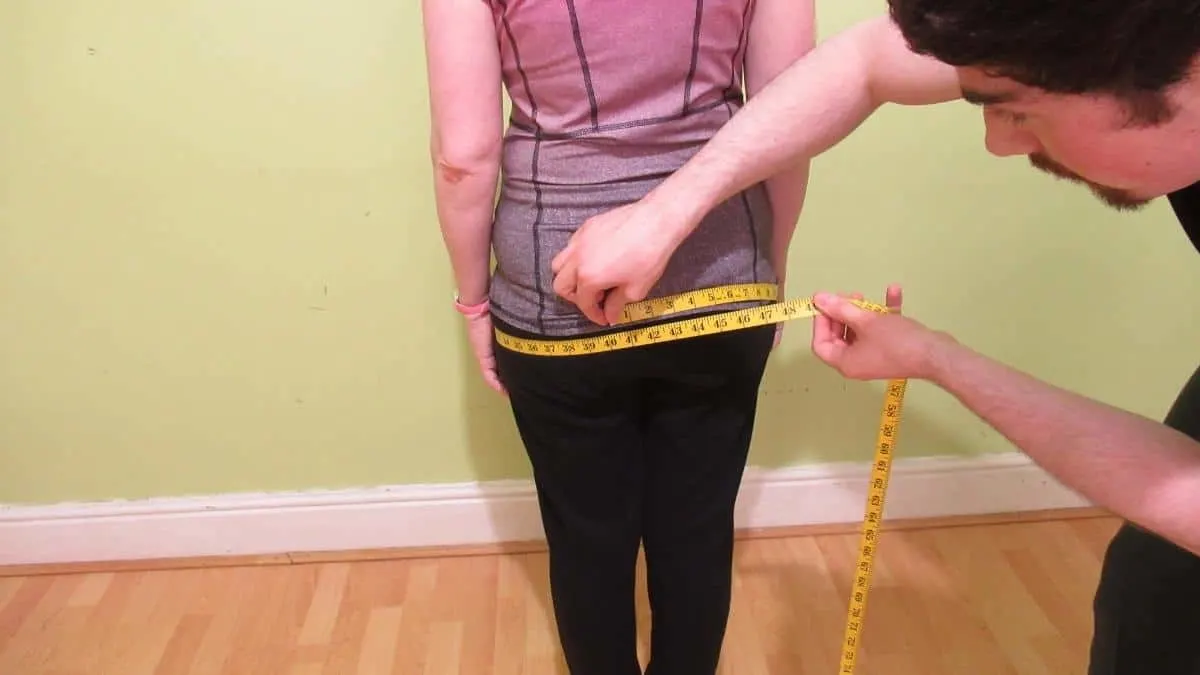If you want to discover the average butt size for men and women, then this article is great information for you. I’ve poured through countless anthropometric studies and have managed to unearth some very impressive data that specifically measured the average buttocks size in males and females.
Related Measurement Guides:
- Average hip size for women
- Ideal waist measurement
- Ideal thigh size for females
- Ideal calf size for females
What is the average butt size for women?
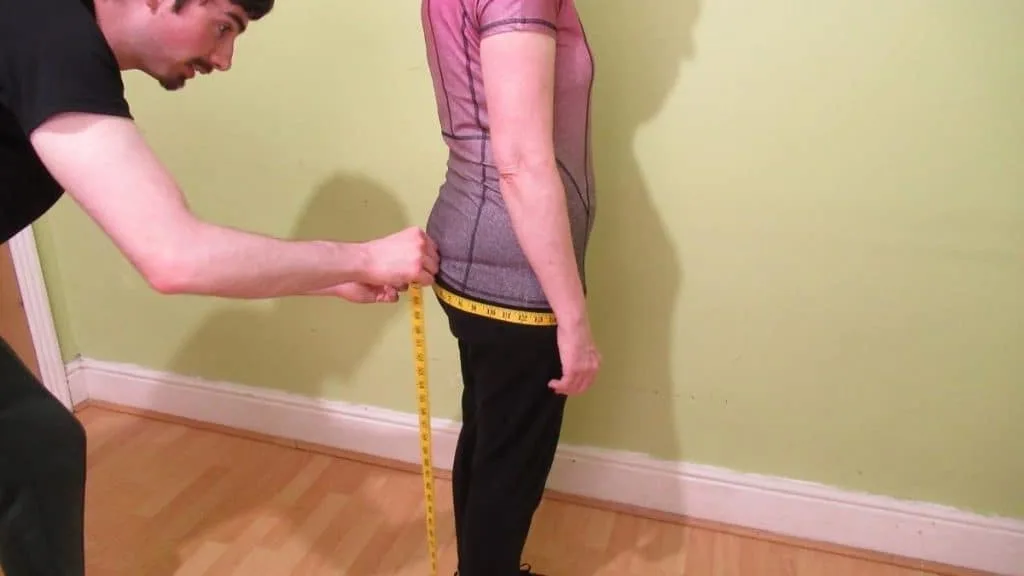
What is the average female butt size? According to US anthropometric reference data, the average butt size for women is 40.2 inches or 102.2 cm. This data is based on the buttocks measurements of 8,068 females aged 20 and over. [1]
Let’s take a look at the average female buttocks size by age.
Women aged 20-29 had an average glute size of 38.7 inches, whereas women aged 30-39 had an average bum size of 40.4 inches.
The average butt size for women aged 40-49 is 40.9 inches, and 41.5 inches for women aged 50-59—the highest measurement out of all the female age categories.
The normal buttocks size for women aged 60-69 was found to be 40.5 inches, and the average size butt for women aged 70-79 was 39.9 inches. Finally, women aged 80+ had an average butt size of 39.1 inches.
It’s interesting to note that buttocks size seems to vary by country. For example, Egyptian women were found to have an average glute size of 42.9 inches—almost 3 inches larger than the glutes of American women. [2]
Conversely, research from the Nutrition Journal shows that Malaysian adults—80% of whom were ethnically Chinese—had an average buttocks measurement of 39.2 inches, which is slightly smaller than the US average.
While this data contains both male and female glute measurements (which tend to be within an inch or two of each other), 60% of the participants were female. [3]
What is the average butt size for men?
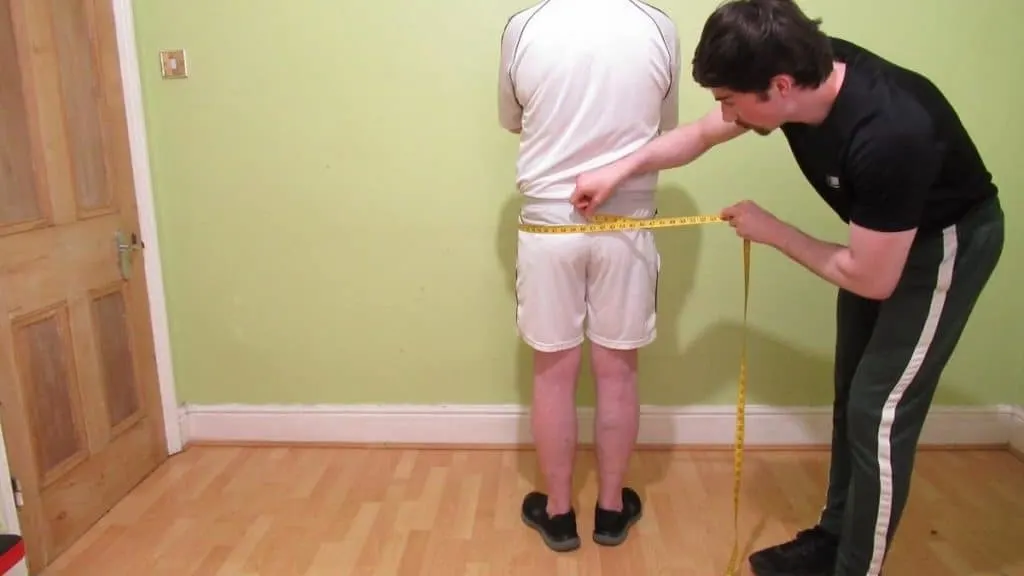
What is the average male butt size? According to data from the CDC’s Third National Health and Nutrition Examination Survey, the average butt size for men is 39.2 inches or 99.6 cm.
This data is based on the buttocks measurements of 7,411 male participants over the age of 20. Let’s take a look at the butt sizes by age.
The average butt circumference for men aged 20-29 is 38.3 inches—the smallest measurement in the data set—and the average buttocks circumference for men aged 30-39 is 39.2 inches.
For males aged 40-49, the average buttocks measurement is 39.6 inches, and for men aged 50-59, the average butt measurement is 39.8 inches—the largest measurement in the data set.
Men aged 60-69 had an average glute circumference of 39.6 inches, and men aged 70-79 had an average glute measurement of 39.2 inches. Finally, the normal butt size for males aged 80+ was 38.4 inches.
Compare Your Glutes:
- 36 inch butt
- 37 inch butt
- 38 inch butt
- 39 inch butt
- 40 inch butt
- 41 inch butt
- 42 inch butt
- 43 inch butt
- 44 inch butt
- 45 inch butt
- 46 inch butt
- 47 inch butt
- 48 inch butt
- 49 inch butt
- 50 inch butt
- 52 inch butt
- 59 inch butt
- 60 inch butt
- 70 inch butt
- 80 inch butt
- 90 inch butt
- 100 inch butt
Butt sizes chart (female)
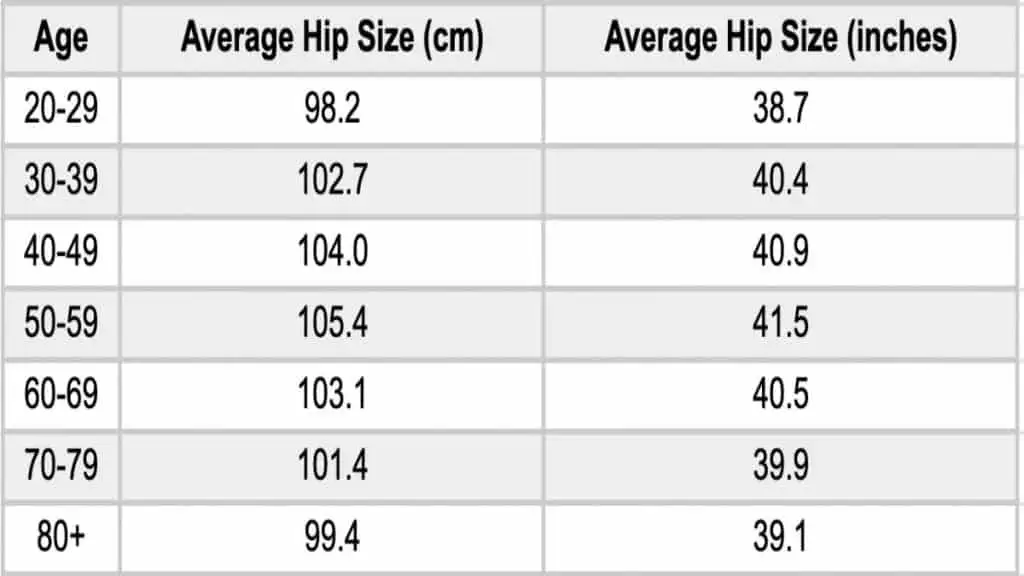
The above butt sizes chart shows the average buttocks measurements for women of various ages. You can see that buttocks size tends to peak around middle age and then decrease as the woman reaches old age.
The reason for the decline in gluteal size could be that the older women simply lost muscle mass, which, in addition to hip bone structure and fat tissue, is the main determinant of glute size.
Indeed, research shows that prolonged periods of inactivity can lead to gluteal atrophy. [4] So there’s a good chance that, in addition to sarcopenia, the elderly women simply lost buttocks size due to inactivity.
Butt size chart (male)
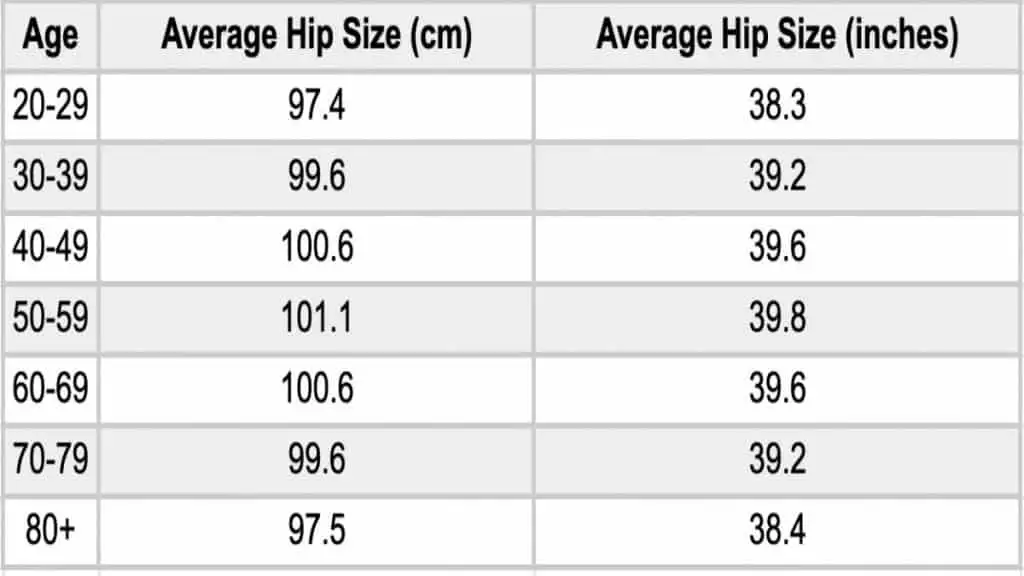
If you compare the male and female butt size charts, you’ll see that women typically have a larger buttocks circumference than men, which may be due to the fact that females tend to store more fat on their hips than males.
As with female buttocks size, male buttocks size also peaks between the ages of 50-59 and then decreases thereafter, demonstrating that the aging process has a similar effect on the body composition of both males and females.
How to measure your glutes
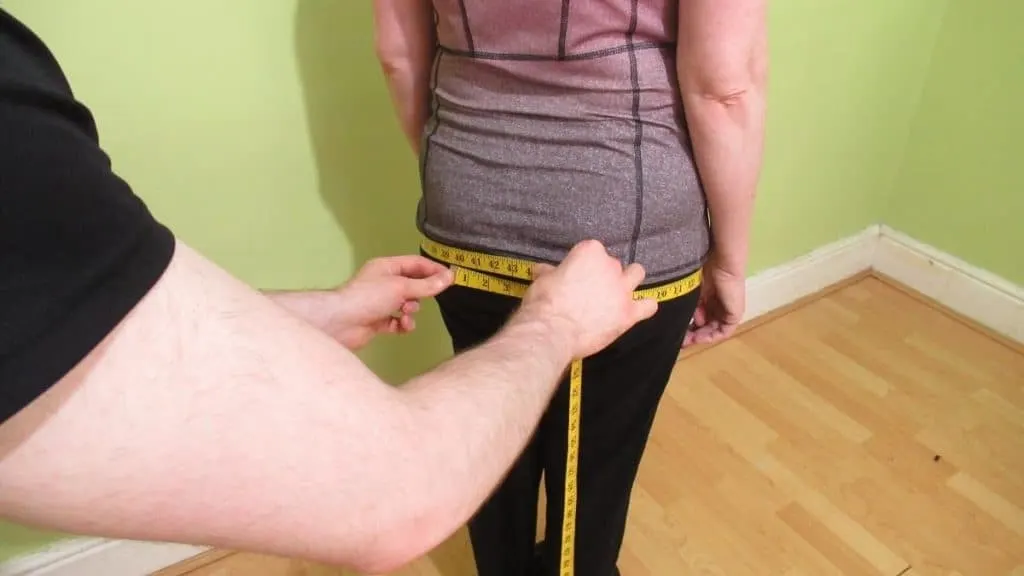
Measuring your glutes is a useful way to assess your body and track your fitness progress—and it’s really easy to do at home. All you need is a flexible tape measure and a mirror.
You can measure your buttocks without a mirror, but the mirror will help you to ensure that the tape measure is straight, which is crucial for getting an accurate buttocks circumference measurement.
You can, of course, get somebody else to measure your buttocks, which will ensure the most accurate measurement possible. So with that said, here’s how to measure your glutes with a tape measure.
- Stand up straight with your feet close together.
- Wrap the tape measure around the thickest part of your glutes.
- Pull the tape snugly around your buttocks so that it doesn’t slide down, but not so tightly that it digs into your skin.
- Note your glute measurement by observing where the ends of the tape overlap.
- Take another 1-2 glute measurements to verify your accuracy.
What is considered a medium sized butt?
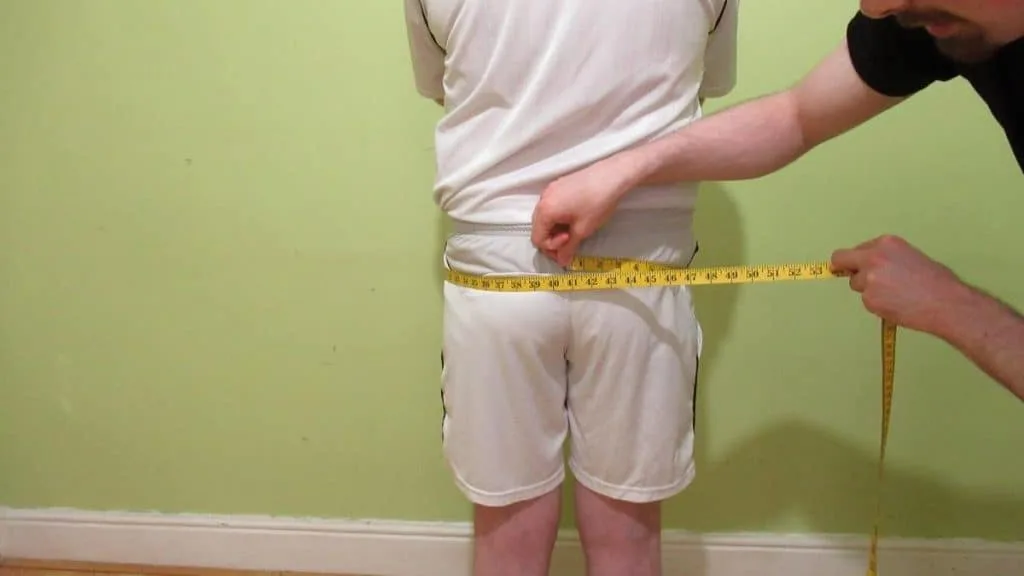
What is considered a medium size butt? Based on the data, a medium sized butt is generally considered to be around 40 inches for a woman and 39 inches for a man.
Of course, the medium butt size does differ by age. So you can check out the glute size charts displayed above if you want to learn the average booty size for men and women of various ages.
But in general, a medium sized booty is right around 40 inches in circumference, give or take an inch.
What is considered a big butt measurement?
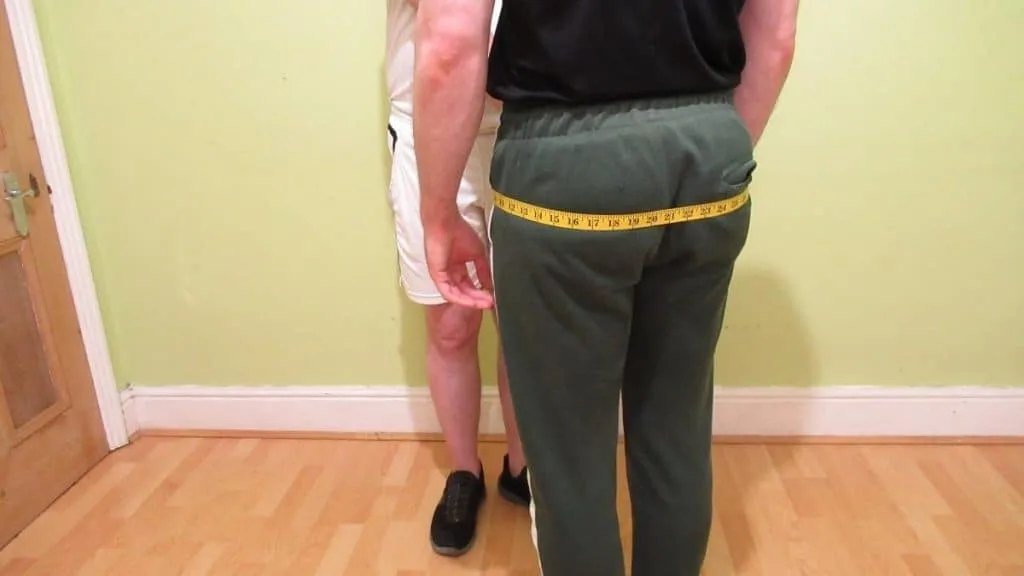
You know the average ass size, but what’s considered a big butt measurement? Based on published anthropometric research and analysis of clothing sizes, a big butt is typically considered to be around 44 inches in circumference.
Now, if you have a smaller butt size than this, but you also have a narrow waist, then your butt will actually look substantially bigger than it is because you’ll have a lower waist-to-hip ratio, which really accentuates the buttocks.
Besides the fact that the glutes are naturally the biggest and strongest muscle in the human body, [5] there are other reasons for people having big butt measurements.
For example, if you train your glutes with weights, then your buttocks measurement will naturally increase by way of gluteal hypertrophy, especially if you gain extra body mass as well.
Additionally, some people naturally store a majority of their body fat on their hips, which, like gluteal muscle mass, can certainly lead to a bigger than average booty measurement.
Is there such a thing as an ideal buttocks size?
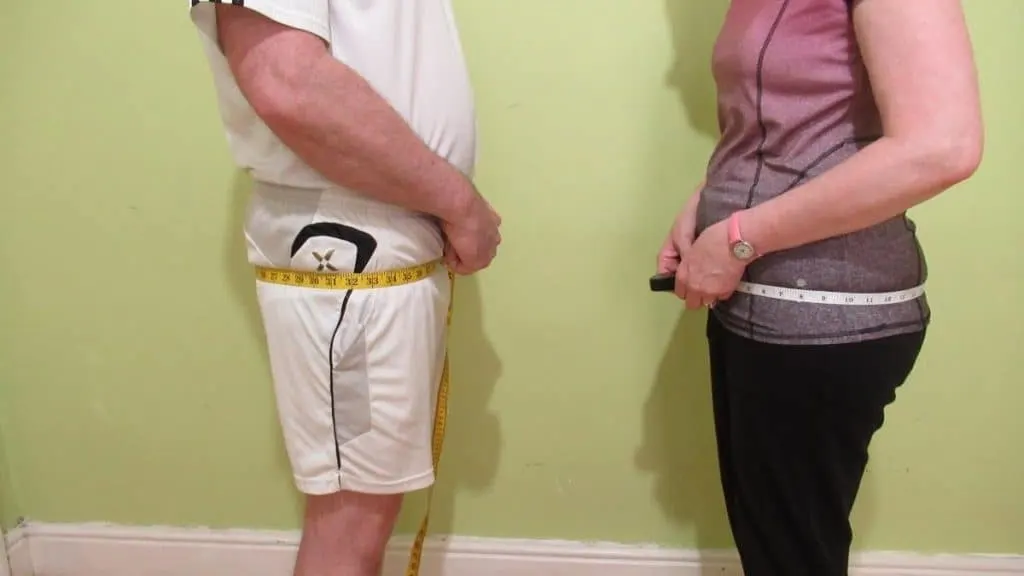
The ideal buttocks size varies for men and women. While there is no such thing as an ideal buttocks size for females, the waist-to-hip ratio (WHR) can determine how big your butt looks because a small WHR really accentuates your buttocks.
Indeed, research shows that men typically find females with a low rather than high WHR more physically attractive. [6]
A ratio of 0.7 is often said to be ideal, although, as more research is showing, this certainly varies based on population and the individual preferences of study participants.
Of course, it is very likely that there are measurements above and below which a certain butt is considered less than ideal, but there is, to my knowledge, no research that examines this specifically.
Many women like men with a somewhat muscular and athletic body type, and this very likely includes having above average levels of gluteal muscle mass.
How do you know if you have a big butt?
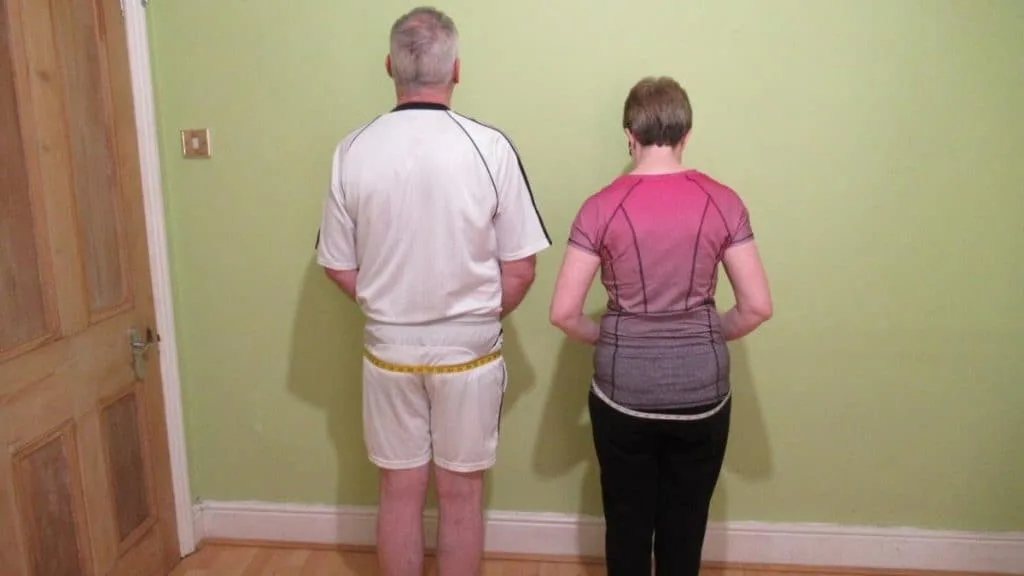
How do you know if you have a big butt? There are a few ways to know if you have a big butt. For example, if your clothing fits around your other body parts okay but is really tight around your buttocks, then that’s a strong indication that you have a big butt.
Another way to tell if you have a big butt is if people often compliment or marvel at the size of your glutes (in real life or on social media), which may happen if you perform regular glute training and have really managed to increase the size of your glutes.
A more scientific and data-oriented way to know if you have a big butt is to measure your buttocks and then see if your measurement is larger than the average glute size.
Conclusion: Is it good to have an average buttocks size?
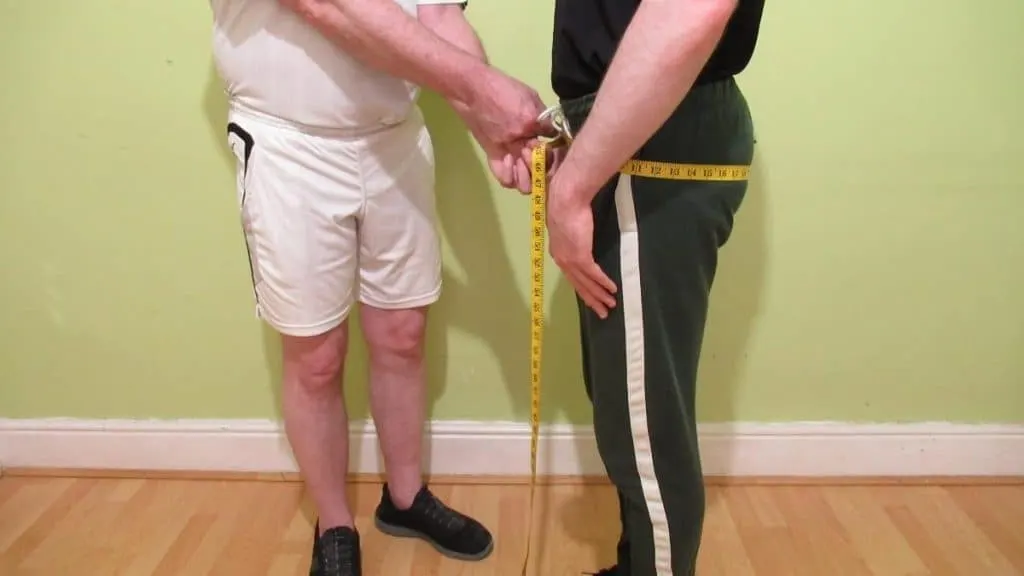
Now that you know how to measure your booty size, you probably have a good idea of whether or not you have an average butt size for your age and gender. But is having a normal buttocks size actually a good thing?
It depends on the kind of physique that you’re trying to build. An increasing number of women, for example, are trying to achieve an above average bum size by training their glutes with weights (as are many men).
On the other hand, some people who are currently overweight or obese actually wish that they had a smaller than average buttocks size so that they could reduce their body weight and improve their physical health.
So, in summary, it’s fine to have a normal bum size, and there’s definitely no such thing as an absolute perfect butt size.
So as long as your buttocks size isn’t indicative of a health problem (such as you being overweight), then you should be okay with your current glute size and happy in the knowledge that you can always increase it.
References
- McDowell MA, Fryar CD, Ogden CL. Anthropometric reference data for children and adults: United States, 1988–1994. National Center for Health Statistics. Vital Health Stat 11(249). 2009
- Azza, Mohamed & Sarry, El & Din, & Erfan, Moushira & Kandeel, Wafaa & Mohamed, Sanaa & Abd, Rokia & Banna, El & Fouad, Walaa. (2012). Prevalence of Pre-hypertension and Hypertension in a sample of Egyptian Adults and its Relation to Obesity. Australian Journal of Basic and Applied Sciences. 6. 481-489.
- Reidpath, D. D., Cheah, J. C. H., Lam, F. C., Yasin, S., Soyiri, I., & Allotey, P. (2013). Validity of self-measured waist and hip circumferences: results from a community study in Malaysia. Nutrition Journal, 12(1). https://doi.org/10.1186/1475-2891-12-135
- Marzke, M. W., Longhill, J. M., & Rasmussen, S. A. (1988). Gluteus maximus muscle function and the origin of hominid bipedality. American Journal of Physical Anthropology, 77(4), 519–528. https://doi.org/10.1002/ajpa.1330770412
- Buckthorpe, M., Stride, M., & Villa, F. D. (2019). ASSESSING AND TREATING GLUTEUS MAXIMUS WEAKNESS – A CLINICAL COMMENTARY. International journal of sports physical therapy, 14(4), 655–669.
- Singh, D. (1993). Adaptive significance of female physical attractiveness: Role of waist-to-hip ratio. Journal of Personality and Social Psychology, 65(2), 293–307. https://doi.org/10.1037/0022-3514.65.2.293

